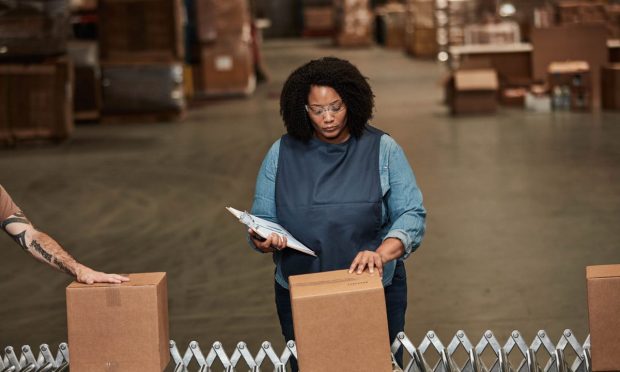Uber’s Delivery Gains Place Platform Squarely in Amazon’s ‘Last Mile’ Crosshairs

For Uber, its platform is the launching pad, the point of pivot that helps the company broaden its horizons, branching out beyond ride-hailing.
And with its continued surge in deliveries — on the part of restaurants and retailers — the company bumps up against Amazon in what might be termed the battle of the last mile.
Amazon, for its part, announced Monday that it now has same-day delivery in 10 U.S. cities for Prime members. With Uber’s Chief Financial Officer Nelson Chai detailing Tuesday (Aug. 2) during the company’s second-quarter earnings conference call that Uber had seen “a real uptick on the delivery side … and the cost per transaction is just improving,” the stage could be set for a last-mile title match.
Chai added that “we’re doing a really good job as a team in terms of creating efficiencies there. We’re seeing gross profit improvement across both mobility and delivery.”
Uber’s earnings results show that gross bookings were up 33% year on year overall. Drill down a bit and the company disclosed in its filings that the Delivery segment saw 12% growth in its gross bookings to $13.9 billion, which in turn powered a 43% gain in its revenues from that unit, to $2.7 billion, as measured in constant currency. Uber Freight grew to $1.8 billion, up from $348 million last year, though it must be noted the most recent results show the impact of the Transplace acquisition, which closed late last year.
As demand surges for delivery and freight — where Uber’s members have about 2.7 times the gross bookings on Uber than non-members across a range of services — so too does supply, chiefly in the form of the drivers themselves.
Management noted on the call that new driver signups were up 76% year on year, and 70% of new drivers signing up on the platform are doing so to garner income to offset inflation impacts.
Power of the Platform
CEO Dara Khosrowshahi said on the call that “what we’re seeing with new vertical customers is that Uber Eats customers, who also order from new verticals, tend to stay with us and tend to have higher frequency. And it’s really a part of the power of the platform … If you ride with us, if you eat with us, if you drink with us, if you order groceries with us, we just become an everyday part of your life.”
The commentary and the numbers continue to bear out Uber’s strategy to extend its platform to become a super app, where consumers navigate all manner of daily activities through a digital front door.
Of course, by promising (and fulfilling that promise) to bring goods to consumers’ front door — pretty much everything from groceries to electronics — Uber battles Amazon.
The Battle vs. Amazon
And as we spotlighted in Amazon’s recent report, delivery times are improving. Management’s own commentary on the conference call was qualitative, but we’re seeing evidence in recent announcements that same-day delivery is a significant initiative for the eCommerce giant.
Read Also: Amazon Q2: Faster Delivery, Expanded Prime Benefits, Less Discounting Than Rivals
Amazon said Monday (Aug. 1) that it is now offering same-day ordering and delivery for Prime members in more than 10 U.S. cities from retailers including PacSun, GNC, SuperDry and Diesel. That roster will, of course, expand.
As we noted, Prime members in Atlanta, Chicago, Dallas, Las Vegas, Miami, Phoenix, Scottsdale, Seattle and Washington, D.C., are the first to sample the new same-day offer, free to U.S. Prime members spending $25 or more on qualifying items and $2.99 for those spending less than $25.
Amazon, as we’ve spotlighted, has 171 million Prime members in place, and they are spending relatively more than has been seen with other subscriptions such as Walmart+.
The same-day delivery option marks an extension of Amazon’s own business models and sets up a continuing, ever-more-pitched battle between the platforms, waged along the last mile.
Read Also: Amazon, Walmart Square off Over Same-Day Delivery
